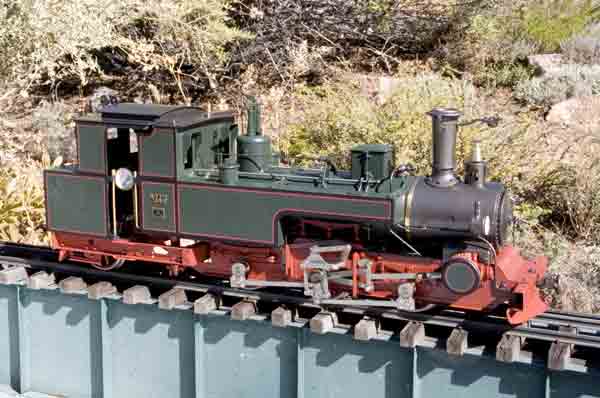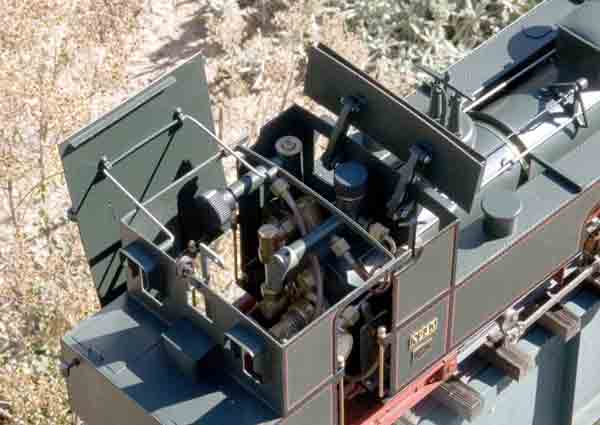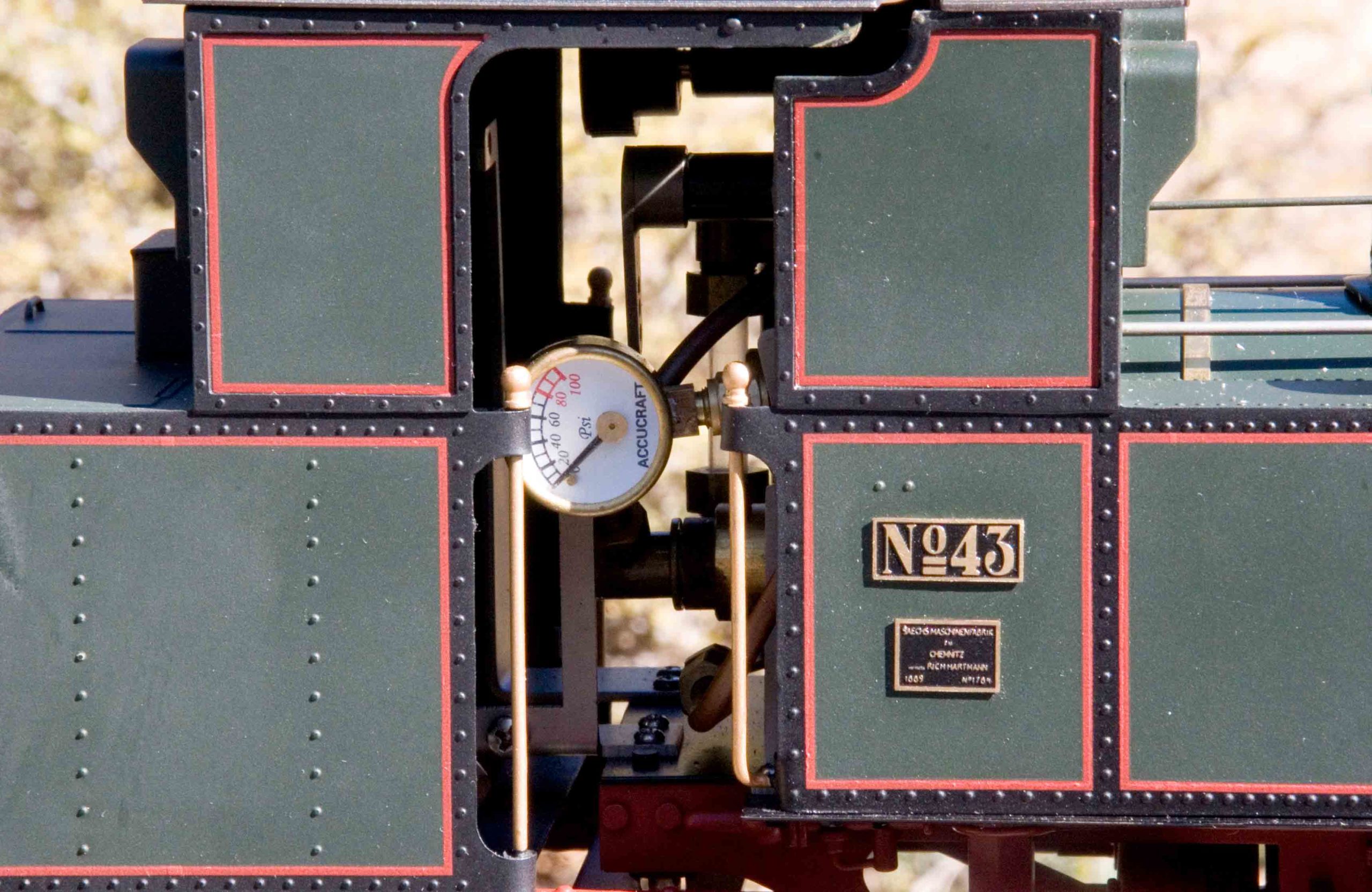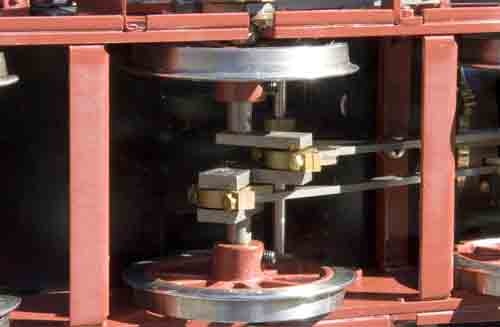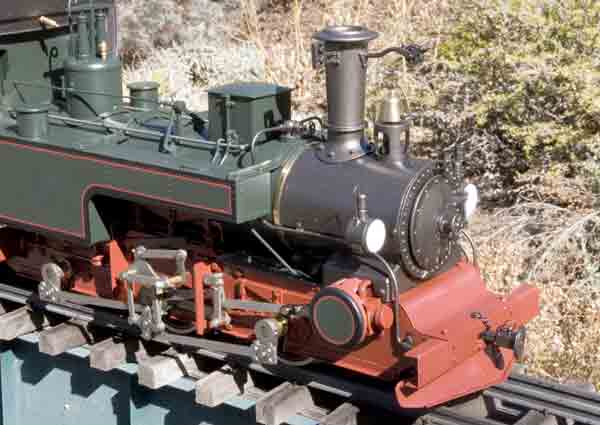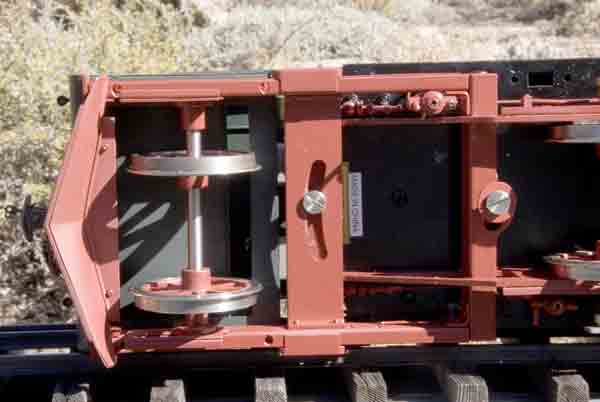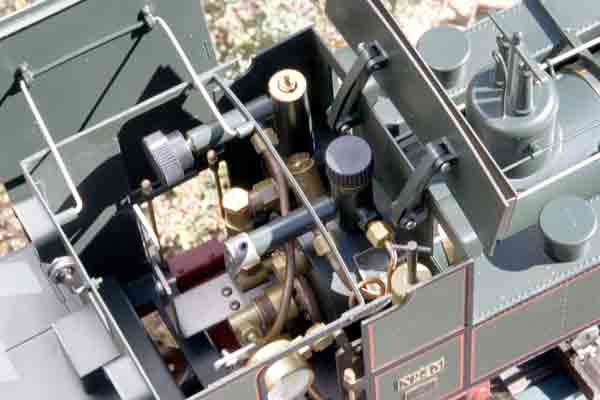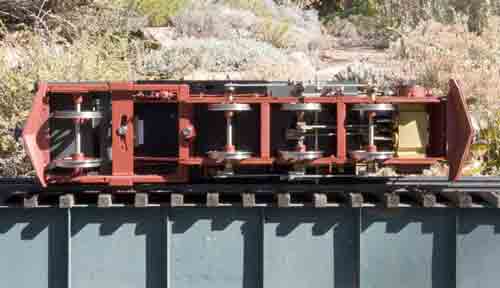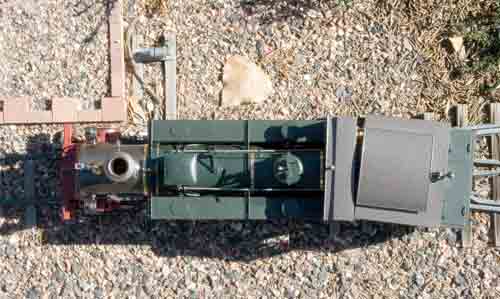1:20.3 scale, gauge 1, Saxonia III K, live-steam locomotive
Made by Accucraft for:
MBV Schug
Neustrasse 18
D-54340 Detzem
Germany
Price: €2,680
Web site: www.accucraft.de
Model of a III K class, 0-6-2T locomotive from the Saxonian State Railway; two, inside, double acting, piston-valve cylinders (outside valves); butane fired; articulated cab and bunker; fittings include pressure gauge, water glass, throttle, safety valve, blowdown valve; regaugeable wheelsets; displacement lubricator; built-in brackets for R/C servo mounting; link-and-pin couplers; piston-valve reversing; dummy outside reversing gear. Dimensions: Length, 167/8″; width, 37/8″; height, 57/8″. In 1:20.3 scale, this works out to 28’6″ x 6’6″ x 9’11”, respectively. Weight, 9 pounds 4 ounces
Pros: High level of detail; good fidelity to prototype; excellent level of finish; all-metal construction; unusual prototype; excellent and interesting performance; relatively simple conversion to radio control
Cons: Small details are fragile; excessive burner noise; external reversing gear is not functional
This is a model of an unusual prototype that was built in 1891 by Richard Hartmann of Chemnitz for the Royal Saxon State Railways in Saxony, located in the southeastern part of what is now Germany. The engine was used for both freight and passenger service.
The model, built by Accucraft, is up to the company’s usual high standard. It features all-metal construction, a wealth of detail (some of which requires careful handling), a high level of finish, accurate representation of the prototype, and good performance characteristics.
This is an unusual locomotive in several respects. It is, in fact, articulated. The cab, supported by the rear truck, swings with that truck behind the boiler. The cab roof is in two pieces (both of which fold up for access), the front part being attached to the forward part of the engine (and front cab wall) and the rear section being attached to the swiveling portion. Inside the cab are the usual controls, which are pretty straightforward. These include the throttle and reversing lever.
The latter actuates a piston valve between the frames, reversing the steam admission and exhaust to the cylinders, thus reversing the engine. The unusual, outside Klose valve gear, while visually accurate to the prototype, is mostly for show. It does actuate the outside valves (also unusual) but does not effect reversing, alas. Also inside the cab are two built-in brackets for the purpose of mounting servos for radio control. The rest of the radio gear can be mounted in the hollow rear bunker.
The gas tank resides in the cab on the left side. There’s also a water glass and an oddly positioned pressure gauge (which could be easily repositioned, should you so desire). There’s also a displacement lubricator with a drain and, under the left-hand tank, a blowdown valve.
The locomotive features a pair of double acting, inside cylinders that drive the second axle via cranks. These are controlled by piston valves outside the frames. The side rods, too, have a most unusual arrangement and are interesting to watch in action.
Despite all of the engine’s unusual features, it is no more difficult to operate than any of Accucraft’s offerings. The engine is first oiled all around with a lightweight machine oil, the gas tank is filled with butane, the boiler with distilled water, and the lubricator with steam oil. The fire is lit through the smokebox door (the instructions advise leaving the door open for a couple of minutes after the fire has been lit). When steam is up, the instructions suggest first running it in reverse, as this will clear the condensate more quickly. Once this is done, away you go.
I followed the instructions closely in preparing the engine. The fire lit with little difficulty, though the burner roar was louder than I liked. When pressure came up, around six or seven minutes later, I did not run the engine in reverse, but just put it in forward gear and opened the throttle. After the condensate cleared, which took just a few seconds, the engine was off, running strongly. It runs well in both directions. Its unusual valve gear and rod arrangements were fascinating to watch in action. The run lasted around a half hour, before I shut it down. Neither the gas nor the water was exhausted at that point.
If you like unusual steam locomotives, this is definitely one to consider. It looks good, is highly detailed, and runs very well indeed.





